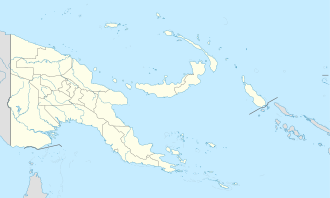History
On June 21, 1943, American forces came ashore on southern New Georgia, and then on June 30, landed on Woodlark Island as part of Operation Chronicle. Guasopa Bay lacked a usable dock so the landing were done with LST landing ships. Landing with the United States Army and United States Marine Corps at Guasopa was the US Navy's Seabee 60th Construction Battalion, and the 20th Construction. The 500 men with the 60th Construction Battalion started work on the airfield and its facilities. The 200 men with the 20th Construction Battalion started work on the harbor, barracks, mess halls, roads, water plant and other services. [1]
At Guasopa Bay Harbor a pontoon pier was built. The PT boat base, and boat repair depot was completed. A sawmill was built to supply lumber for the harbor and airfield needs. A coral quarry was built to build roads, walkways and runways.
Airfield construction started on July 2, after 12 days a 3,000-foot fighter plane runway was completed. On September 15, the runway was lengthened to 6,500-feet and bombers began use of the runway. The airfield was called Narewa Airfield, but also called Woodlark Island Airfield and Guasopa Airfield. After the war, the airfield became Guasopa Airport. [3]
Japan had airbases close enough that there were some bombings at Guasopa during construction. The bombings caused minor damage and no casualties to the construction crews.
All construction was completed on November 1, 1943, and most of the Seabees departed Naval Base Woodlark Island. A maintenance crew of 309 men with the 60th Battalion stayed at Naval Base Woodlark Island until March 1944. [1] [4] [5] [6]
Naval Base Woodlark Island Feet Post Office, FPO# is 528 SF Woodlark Island.
This page is based on this
Wikipedia article Text is available under the
CC BY-SA 4.0 license; additional terms may apply.
Images, videos and audio are available under their respective licenses.









